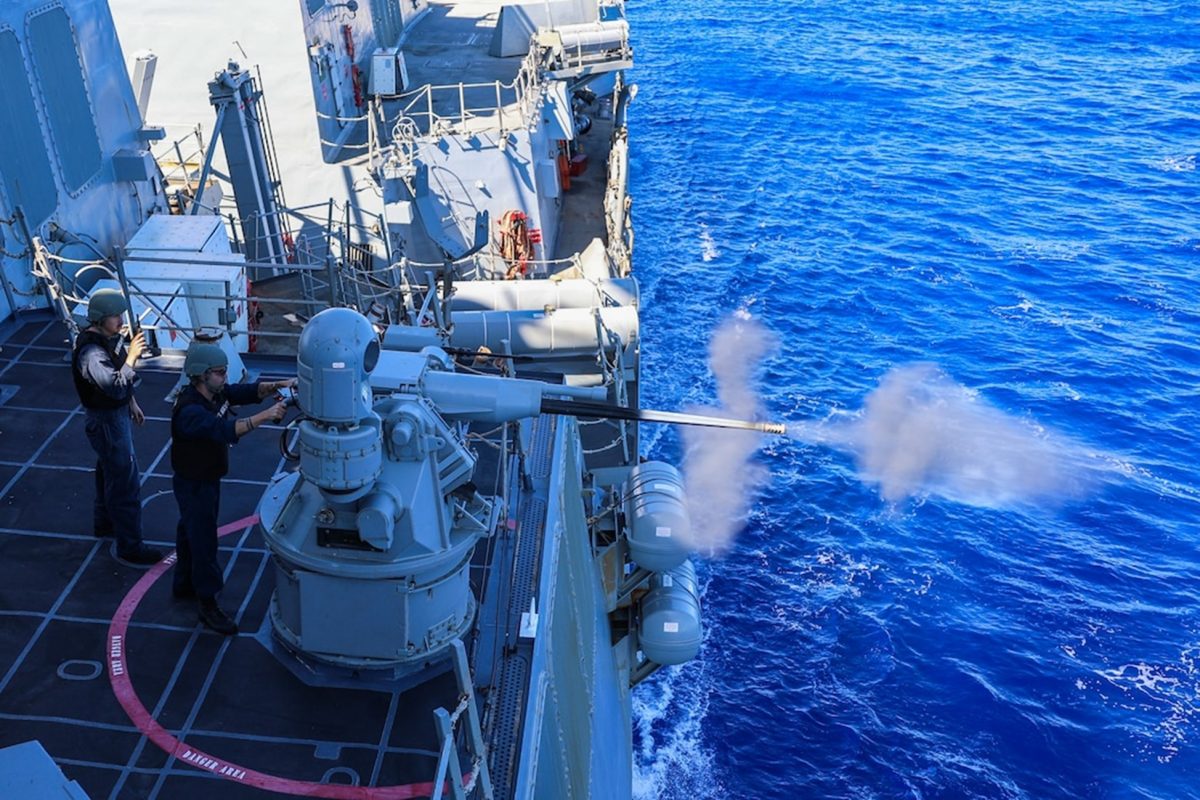On September 19, Chief of Naval Operations (CNO) Adm. Lisa M. Franchetti, America’s top admiral underscored the imperative for the Navy to meet the demands of an evolving technology and national security landscape.
She did so in the context of the release of the “Navigation Plan for America’s Warfighting Navy 2024,” during a discussion hosted by the Center for Strategic and International Studies, a public policy think tank in Washington. The plan outlines two overarching strategic ends: readiness for the possibility of war with China by 2027 and enhancement of the Navy’s long-term advantage.
“China is clearly the pacing challenge,” she said. “They are on a wartime footing.” Franchetti added that China presents a multidomain challenge encompassing not only military, but also economic competition.” She emphasized China’s lack of transparency about its actions around the globe, and its affinity for use of dual-use technologies to accomplish its aims.
The Admiral discussed the changing nature of war and the imperative to adopt robotic and autonomous technology and the reach and lethality of the fleet as key guide rails for the strategy going forward.
The plan includes seven, core fleet readiness that include:
Ready the force by eliminating ship, submarine and aircraft maintenance delays; Scale robotic and autonomous systems to integrate more platforms at speed; Create the command centers the fleets need to win on a distributed battlefield; Recruit and retain the force need to get more players on the field; Deliver a quality of service commensurate with the sacrifices of American sailors; Train for combat as the U.S. plans to fight, in the real world and virtually; and Restore the critical infrastructure that sustains and projects the fight from shore.
Franchetti said the navigation plan captures how the Navy can think, act and operate differently with the resources it has to make the most gains in the shortest time possible.
“If you look at the ways we’re trying to do that, which are really seven areas that as I worked with my team, with our four-star fleet commanders, these are areas that I can put my thumb on the scale,” she said. “We could make a difference in those areas, and it will make a meaningful contribution to our ability to be more ready by 2027.
The plan also lays out the Navy’s plan to expand its contribution to the joint warfighting ecosystem, building upon the implementation framework for fielding key capabilities outlined in the 2022 Navigation Plan, with an additional focus on scaling robotic autonomous systems. The implementation framework focuses on five capabilities ranging from long-range fires to contested logistics. It also focuses on four key enablers ranging from artificial intelligence to robotic and autonomous systems.
She diplomatically noted that domestic fiscal and industrial base constraints add to the Navy’s challenge, she said, as the service recognizes the need to grow its fleet. That’s a politically polite way to state that the American service is outnumbered drastically by China. It also tacitly recognizes that combat with China, and perhaps with its adversaries combined against the U.S., is becoming a near certainty by 2027.
Defense expert Mackenzie Eagleton warns that “When it comes to putting hulls in the water, Beijing is far and away ahead of the United States. China has continuously outpaced the U.S. in shipbuilding capabilities and shipyard capacity. Indeed, the shipbuilding divide between China and the United States is vast. A recently declassified intelligence slide from the Office of Naval Intelligence estimates that China has 232 times the shipbuilding capability of the United States, owing to its much larger shipbuilding manufacturing industry.
Stunningly, in the face of an almost certain war in the next few years, the lack of investment in the U.S. Navy by the Biden-Harris Administration has received almost no attention in the media.
Photo: Gunner’s Mate 2nd Class Jonathan Salazar and Gunner’s Mate 2nd Class Charles Reece manually fire the Mark 38 Mod 3 25 mm machine gun system during a pre-action calibration firing exercise aboard the Arleigh Burke-class guided-missile destroyer USS Bulkeley (U.S. Navy photo)
